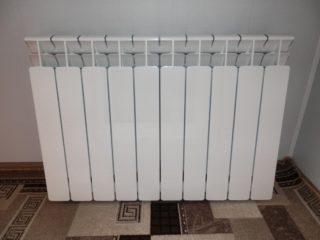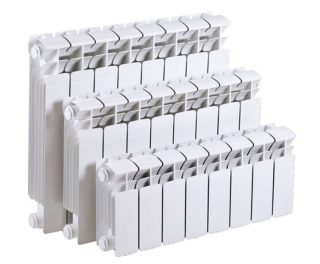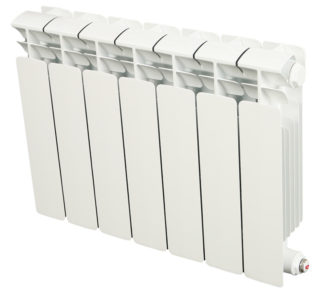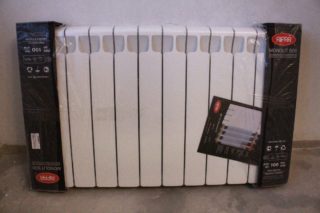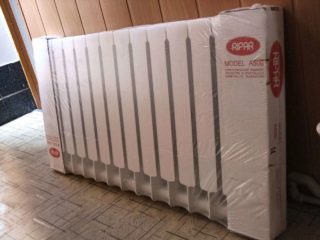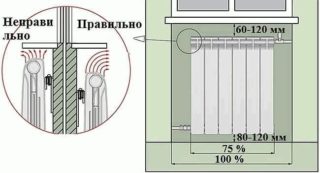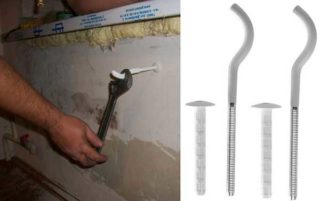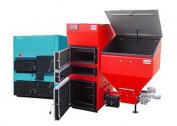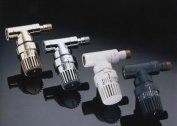Rifar radiators are bimetallic models that have a special design and technical specifications. Due to the operational properties of the product are very popular among customers.
Manufacturer Info Rifar
Rifar company has been selling its products in the Orenburg region since 2002. The domestic brand produces aluminum and bimetallic batteries, which are divided into sections. Radiators are specially designed for use in the Russian climate. They can be installed for heating homes, apartments, cottages and non-residential buildings.
Despite the already existing success, the company continues to develop in the field of improving the performance of radiators. Not only the achievements of foreign colleagues are taken into account, but also the conditions created by the Russian climate, under which it is necessary to modernize the innovations available on the market.
Pros and cons of radiators
Rifar batteries are available in stores around the world and are an example of quality heating systems. Rifar bimetal radiators have the following advantages:
- The maximum water temperature can be 135 degrees.
- The ability to control the temperature. The intensity of the heating is selected by the owner of the radiator.
- Universality. Batteries can be used to create centralized and autonomous systems. The average working pressure is at around 20 atm. In tests, the pressure is increased to 30 atm.
- Cost. Due to the fact that Rifar is a domestic product, its price is lower than that of imported competitors, although in terms of quality it is not inferior to analogues collected in other countries.
- The outer monolithic layer. The paint is applied using a special technology that prevents chips and damage to the radiator.
- Inside the radiators are covered with a special layer, which is necessary to protect the structure from the effects of water and the chemical elements contained in it.
- The heat transfer of one section can reach 200 watts.
- The official warranty period for all Rifar products is 10 years.
- Ability to add sections. If the heat generated is not enough, the radiator owner can buy the modules that are installed on the battery.
Rifar bimetal heating radiators have only one minus - the cost. All batteries that use bimetal are notable for their high price. Although domestic products are cheaper, they still do not reach the level of cast-iron radiators. The smaller flaws include the weak thread found on all Rifar specimens.
Rifar Radiator Specifications
The characteristics of Rifar bimetal heating batteries depend on the model range. Each of them has individual indicators, calculated depending on the needs of the buyer. But all models are united by a liquid used as a heat carrier - water.
Rifar base
The basic model is divided into 3 types: 200, 350, 500. The distance between the axes is indicated by a number, which directly affects the power and heat transfer parameters. Model 500 is installed in rooms with a large area or low heating level. The less powerful 200 and 350 models, which have the best price / quality ratio, are designed for small rooms.
Rifar monolit
The best-selling model, which is capable of delivering the highest efficiency under the most extreme working conditions.The maximum pressure is 100 atmospheres and the temperature is 135 degrees. At the same time, the battery life reaches cast iron - up to 50 years. Found the widest application in public institutions and private homes.
Rifar alp
The model with a shallow depth (75 mm) is intended for rooms with wide window openings. According to standards, the battery should occupy three quarters of the latitude of a niche in the wall. The length is regulated by the number of sections: from 4 to 14 blocks.
How to choose batteries
Radiators from Rifar bimetal should be selected, focusing on the required power. An additional regulatory factor will be the ability to select the number of sections. Therefore, the best option for an apartment is Rifar Alp.
If you are installing in a private home, Base models that are notable for their low cost are suitable. For more modern heating systems, Monolit is suitable, but you need to remember that it is impossible to connect additional sections to such models.
The choice of the number of sections required depends on the area of the room and the heat loss. Experts who work with heating systems will best determine the required power. When determining the value yourself, you must adhere to the plan:
- Multiply power by the area of the room with a coefficient of 1.1, if there are windows with a large area.
- Determine the heat output of each section from the passport. Information can be found on the manufacturer's website or in the attached documentation.
The total power of the radiators should not be less than the obtained value when multiplied by the area of the room. In the Alp series, you can select the exact number of sections required.
Features of installation and operation
Heating equipment must be installed in designated areas. If you follow the recommendations, the battery will give maximum efficiency, heating the room without heat loss.
Most often, radiators are installed under the window. This allows you to get rid of the likelihood of condensation on the glass, and heat losses will be minimal. When installing Rifar bimetallic radiators, the following distances must be observed:
- from the windowsill to the top of the battery - 15 cm;
- from the wall - 5 cm;
- from the floor - 15 cm.
Incorrect connection of the Rifar heating radiator will result in heat loss of up to 40%. Installation should be carried out in accordance with the following algorithm:
- Marks of places of future brackets.
- If the wall is built of brick or concrete, dowels must be installed. If drywall was used during construction, the radiator must be mounted on both sides.
- Attaching brackets and installing batteries.
- Connection to the heating system by connecting pipes.
- Installation of a tap to shut off water.
- Mounting the air valve.
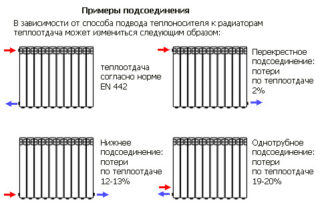 The Rifar battery installation procedure can be carried out both by a specialist and by a person with no experience. The main thing is to follow the installation recommendations:
The Rifar battery installation procedure can be carried out both by a specialist and by a person with no experience. The main thing is to follow the installation recommendations:
- Before starting work, the water supply is shut off. It is necessary to check that there are no liquid residues in the pipes.
- Batteries may be sold assembled or disassembled. In the second case, for assembly, you need to read the instructions.
- Verify the complete set. All necessary fixtures, taps and valves must be available.
- When the installation procedure is completed, water is introduced into the radiator and the remaining air is vented using the installed air valve.
- The connection scheme can be lateral, lower or diagonal. It must be observed when installing the radiator.
- Fittings must be joined using materials that are resistant to high temperatures.
- Screens should not be installed on top of radiators, as they will reduce the KDP. In this case, heat loss can be up to 40%.
Installation of Rifar bimetallic batteries is possible by one person, since the design is lightweight due to the material used.
